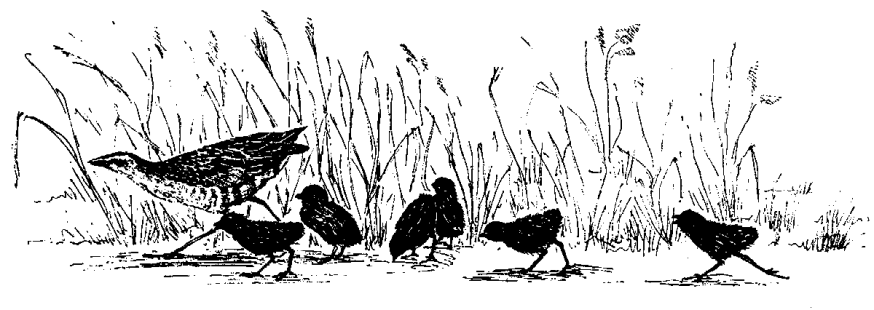Supporting guidance for Creation of Cover for Corncrakes
Date published: 30 March, 2015
Note: In September 2023, references to Scottish Natural Heritage have been updated to NatureScot.
Corncrakes require long vegetation as cover when they return to the UK from their wintering grounds in April and May, and for breeding throughout the summer. Generally, they need vegetation that is over 20 centimetres in height.
Cover in spring – early cover – is usually provided by tall herbs with an early growing season such as flag iris, nettles, and cow parsley or standing vegetation from the previous summer. Late cover is provided by long grass and other herbaceous plants.
Returning corncrake settle in areas containing tall herbs before moving into larger hay meadows, silage fields and pasture fields as the grass grows.
Corncrake do not like to break cover as they move from one field to another. Therefore, areas containing tall herbs managed as corncrake cover are most effective if they are adjacent to or within mown grassland fields.

What needs to be done?
You need to establish areas of vegetation that are likely to provide good cover in spring. Each planted or sown area must be a minimum size of 0.05 hectares. Suitable plants include flag iris, nettles, meadowsweet, cow parsley and hogweed. A variety of methods may be used to create cover. Two are suggested below:
Method 1: Flag iris
- choose a damp site, preferably with some existing native flag iris beds
- transplant flag iris rhizomes into the area in early spring
- spread with manure / seaweed
- protect new flag iris beds from grazing whilst they are establishing
Method 2: Mixed herbs
- choose a site that already contains some stands of tall herbs such as nettle
- where sites are covered with a dense mat of grassland vegetation break it up by surface disturbance (for example with harrows) to expose the existing seed bed and reduce grassland dominance
- directly transplant early cover species such as nettles, meadow sweet, cow parsley and hogweed from a suitable source
- manure the area, using farmyard rotted manure, seaweed or well-rotted burst bales. If using big bales of silage, ensure that these have been broken open and left to rot fully before putting them on the area
For all proposals
- ensure that the area is accessible to allow management to be carried out in future years, e.g. access for stock, and farm machinery
- ensure that any plants for transplanting are taken from a suitable source with the landowner’s permission. Do not remove plants from designated land without permission from NatureScot. Do not remove plants from sites where corncrake are likely to be breeding already
- aim for a tall-herb cover which occupies at least 30 per cent of the sward (by area) distributed across the area (not confined to its margins or occupying a small corner of it)
- where necessary, supplement the first year’s planting on annual basis, e.g. by transplanting more plants to achieve a tall herb cover of 30 per cent of the sward within three years of planting.
- describe the method you will use for creating cover in your application.
- The Management of Cover for Corncrake option supports the annual management of corncrake cover and can be combined with the Creation of Cover for Corncrakes item
Adding benefit
To benefit species other than corncrake, e.g. the great yellow bumblebee, add plants like red clover and Phacelia to areas with mixed herb cover.
Which fields to choose
This item benefits corncrake most if it is used adjacent to the following Corncrake Mown Grassland option.
Further information
For further information about corncrake conservation you can contact your local NatureScot office or RSPB Scotland. To find your local RSPB adviser, contact the RSPB Advisory Manager for Scotland on 0131 317 4100.
